Templates make your life easier. Often your projects are similar and using a template means you can set up a project in minutes. It will have all the tasks, user stories and actions set up for the project.
When you create a project using a template, you can still add to it afterwards. For frequently used tasks, user stories and actions, you can also create templates. These are easily added to a project whether you used a template or not.
You will see in the project template that dates, budget hours and dollar amounts may be required. These will adjust to the start date of your project. Any template budget hours and dollar amounts can be changed in the project.
To create a new project template, complete the following steps.
- Go to the Configure area.
- In the left navigation, go to the Template section.
- Click Projects and then, click the + sign.
- Fill in the following required fields.
Name – The name of the project template.
The template name becomes part of the project name by default. It’s a good idea to make it short and explanatory. For example, Basic Implementation or Rapid Start Deployment. You can change it in the project later.
Classification – Choose the appropriate classification for this project. The setting is configurable for your organization. You may have different types of projects such as Customer Onboarding or Managed Services.
Classifying your projects allows you to analyze the types of projects you are doing. You can gather metrics to see what types of projects you are successfully delivering and what types might need some adjustment.
Billing Type – Choose Time & Materials (hourly rates), or Fixed Price.
- Click Save. You now have a blank template that you can start building with typical tasks, user stories, actions and required roles.
You will see tabs where you can add more information. They include Schedule, Details, User Stories, Actions, and Related. Each of these tabs serves a different purpose.
Schedule
Here you will see the schedule of the project in a Gantt chart as you build it. The first task on the list is the project name itself, the parent task of all the others you add.
From here, you can add Tasks. See the next section, Add Tasks to Your Template, for more information. You can also create project task templates which are set up in the same area where you started your project template.
Details
When you set up a project template, this tab contains minimal information: Template Name, Classification and Billing Type . It will contain more project information as soon as you use the template to set up a new project.
User Stories
From here, you can add User Stories to the project. You will have to include the Task it is related to, and provide a Name, Start and End Dates, and Budget Hours.
Actions
From here you can set up Actions. These are part of the R.A.I.D. log--items that include Risks, Actions, Issues and Key Decisions. In a template, you are limited to Actions because you won’t yet know what other items might be encountered on the project. You can associate them with a task or user story in the form.
R.A.I.D. items are not typically billed on a project. You have the option to make them visible to the customer or not.
Related
This displays the Audit History which presents a full list of changes made to the account including the date, time, and user who made the changes. Background Processes would be used by an Administrator only.
Add Tasks to your Template
- From the Schedule tab, click Add. Select Dependent Task or User Story. Depending on what you selected, either the New Project Task form or the New User Story opens.
- Fill in the following fields: Name, toggle for Milestone, Description, Start Date, End Date, Budget Hours. Required fields have an asterisk next to them
- Click Save. The Project Task form opens.
You will see tabs where you can add more information. They include General, Details, Dependencies, User Stories, Actions, and Related. Each of these tabs serves a different purpose.
General
This tab provides an overview of the information you just added. It also includes additional fields such as Project Task Classification.
Details
As this is a project template, this tab contains minimal information about the task. It will contain more project information as soon as you use the template to set up a new project.
Add a Planned Role for each task and user story to assist with building your team when you use this template to set up your project.
Dependencies
Here is where you set up the dependencies between tasks. You can also use the Add button and select Dependent Task.
User Stories
If user Stories are associated with this task, any hours connected to them will appear here. You can also use the Add button and select User Story.
Actions
Similar to project actions, these are actions associated with this task. List any actions (R.A.I.D. items) here.
Related
This tab is similar wherever it appears. It displays the Audit History and Background Processes.
Once you have added all the tasks user stories and action that are relevant to a project of this type, you can start using this template for the quick creation of this type of project.


